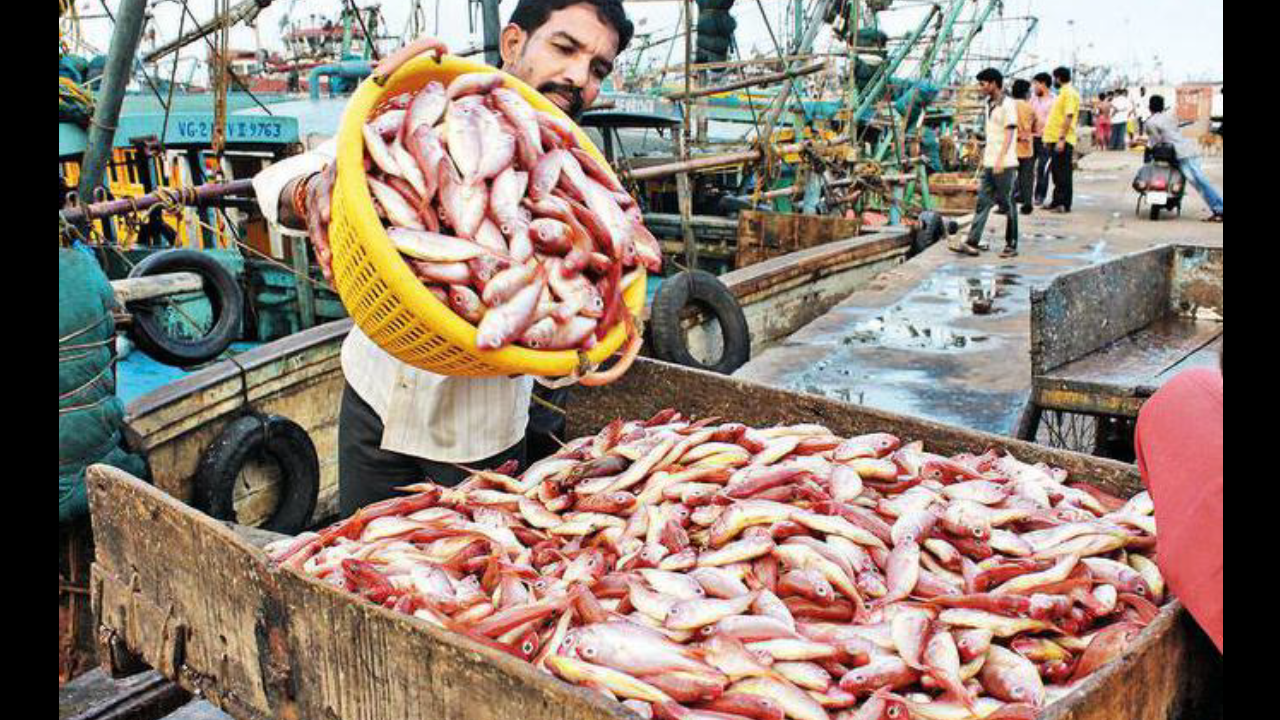RAJKOT: With inventories as huge as Rs 300 crore chilling in their freezers thanks to high inflation in the European markets, seafood exporters in Gujarat are in the soup.
Ever since Russia invaded Ukraine, Gujarat’s fish exports to the European market were affected by 30% to 35% after high inflation made fish a luxurious item.
In Gujarat, Veraval has over 100 fish export-oriented units, which process fish of various qualities from the entire Gujarat coast, including Diu, to be sent abroad. The yearly export of Veraval is around Rs 5,000 crore, of which Europe’s market share is 30%.
President of the Seafood Exporters Association of India (SEAI) Jagdish Fofandi said, “Demand for fish in Europe is extremely slow which has dipped prices by 25%. Compared to the previous year, Veraval exporters have 25% to 30% more inventory this March. Approximately, an inventory of Rs 250 crore to Rs 300 crore of Europe-centric fish lies in Veraval’s cold storages.”
The fishing season ends in May and by the end of June or mid-July, the exporters also clear the previous year’s stock to make space for fresh stock in the opening season after the monsoon. However, this year this is not possible as owing to the high inventories, the exporters did not buy sufficient stock from the fishermen. With this, the average price paid to the fishermen also dropped this year.
According to the exporters, the latest report suggested that inflation in Europe dropped in March but core inflation escalated, as a result of which spending dropped and unemployment increased in European countries. They now prefer other meat instead of fish which they find costly.
Kenny Thomas, a leading exporter of Veraval said, “The inventory is very high. Last year, I had an inventory of Rs 60 crore in March, while this year I have an inventory of Rs 75 crore, which is 25 per cent higher even though my purchase was reduced due to the global situation. Most of the exporters won’t be able to clear the stock before the new season starts after the monsoon and will have to carry forward the last season’s stock only.”
The exporters also target the US market, where export is only 10 per cent of total exports. However, the American market too is struggling with the same inflation issues. High-end varieties like cuttlefish, pomfrets, lobsters, squids and jumbo shrimps are the first choice for European and American markets.
Ever since Russia invaded Ukraine, Gujarat’s fish exports to the European market were affected by 30% to 35% after high inflation made fish a luxurious item.
In Gujarat, Veraval has over 100 fish export-oriented units, which process fish of various qualities from the entire Gujarat coast, including Diu, to be sent abroad. The yearly export of Veraval is around Rs 5,000 crore, of which Europe’s market share is 30%.
President of the Seafood Exporters Association of India (SEAI) Jagdish Fofandi said, “Demand for fish in Europe is extremely slow which has dipped prices by 25%. Compared to the previous year, Veraval exporters have 25% to 30% more inventory this March. Approximately, an inventory of Rs 250 crore to Rs 300 crore of Europe-centric fish lies in Veraval’s cold storages.”
The fishing season ends in May and by the end of June or mid-July, the exporters also clear the previous year’s stock to make space for fresh stock in the opening season after the monsoon. However, this year this is not possible as owing to the high inventories, the exporters did not buy sufficient stock from the fishermen. With this, the average price paid to the fishermen also dropped this year.
According to the exporters, the latest report suggested that inflation in Europe dropped in March but core inflation escalated, as a result of which spending dropped and unemployment increased in European countries. They now prefer other meat instead of fish which they find costly.
Kenny Thomas, a leading exporter of Veraval said, “The inventory is very high. Last year, I had an inventory of Rs 60 crore in March, while this year I have an inventory of Rs 75 crore, which is 25 per cent higher even though my purchase was reduced due to the global situation. Most of the exporters won’t be able to clear the stock before the new season starts after the monsoon and will have to carry forward the last season’s stock only.”
The exporters also target the US market, where export is only 10 per cent of total exports. However, the American market too is struggling with the same inflation issues. High-end varieties like cuttlefish, pomfrets, lobsters, squids and jumbo shrimps are the first choice for European and American markets.

